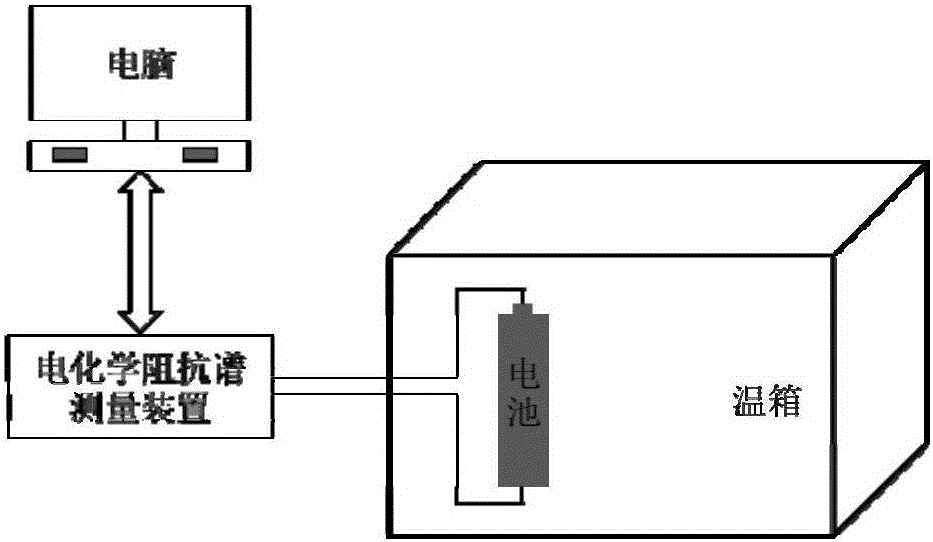Method of estimating secondary battery internal temperature based on electrochemical impedance
A secondary battery, internal temperature technology, used in thermometers, thermometers with directly sensitive electrical/magnetic components, scientific instruments, etc., can solve complex costs, increase the cost of measuring temperature, affect battery performance and service life, etc. problems, to achieve the effect of improving safety, simple measurement principle, and optimizing working conditions
- Summary
- Abstract
- Description
- Claims
- Application Information
AI Technical Summary
Problems solved by technology
Method used
Image
Examples
Embodiment Construction
[0023] Embodiments of the present invention will be described in detail below, and the embodiments described by referring to the drawings are intended to explain the invention and should not be construed as limiting the invention.
[0024] The present invention proposes a battery internal temperature estimation method based on electrochemical impedance. The battery internal temperature measurement method of the embodiment of the present invention is described below with reference to the accompanying drawings. The present invention takes lithium-ion batteries as an example, but this method is not limited to lithium Ion batteries can also be used in various secondary batteries such as nickel metal hydride batteries or lead-acid batteries.
[0025] An embodiment of the present invention is the flow process of the temperature measuring method of lithium-ion battery such as figure 1 As shown, the battery temperature estimation method of the embodiment of the present invention inclu...
PUM
 Login to View More
Login to View More Abstract
Description
Claims
Application Information
 Login to View More
Login to View More - R&D
- Intellectual Property
- Life Sciences
- Materials
- Tech Scout
- Unparalleled Data Quality
- Higher Quality Content
- 60% Fewer Hallucinations
Browse by: Latest US Patents, China's latest patents, Technical Efficacy Thesaurus, Application Domain, Technology Topic, Popular Technical Reports.
© 2025 PatSnap. All rights reserved.Legal|Privacy policy|Modern Slavery Act Transparency Statement|Sitemap|About US| Contact US: help@patsnap.com



